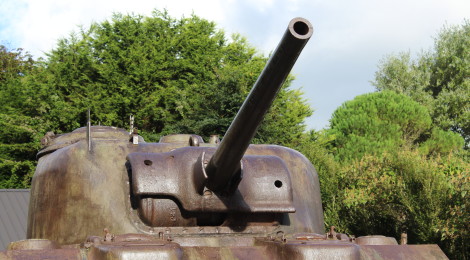
Omaha Beach – Bloody Omaha
The morning of June 6th saw 34,000 US troops descending on Omaha Beach. This was the first wave of soldiers from the 29th Infantry Division, Army Rangers and the 1st Infantry Division, the Big Red 1. The 1st had seen action in Sicily and North Africa but this would be the first combat for the 29th.
Omaha Beach was ~5 miles long and divided into 10 sectors, Charlie, Dog Green, White, Red, Easy Green, White, Red, and Fox Green, White Red. Defense of this area fell to the German 352nd Infantry Division, 12, 020 men of which half were seasoned combat veterans. Spread across 15 strong points called Widerstandsnest (“resistance nests”), #62-68 were located at Omaha Beach, and supported by mine fields, 60 pieces of light artillery, 8 gun casements for heavy artillery, 35 pillboxes, 18 anti-tank guns, and 85 machine gun positions, it was felt that any attack could be repulsed to the waterline.
Speaking of waterline, at low tide Omaha Beach presented a vast geographic obstacle. At low tide there would have been 330 yards to cross in shallow water, climb an 8′ shingle (loose rock wall), cross another 200 yards of sandy beach only to reach a 100-125′ seawall. Think about that. For example, a machine gun fires at a rate of 1,200 rounds per minute with a distance of 1 mile and situated in a manner where flanking fire covers the entire beach. With 2 or 3 machine guns pointed at the same section of beach, how could anything survive? Not to mention the underwater obstacles, Rommel Sticks, mines and Belgium Gates. Nothing less than a miracle could help the first wave of Allied troops. Roughly 2,400 casualties resulted in this day of fighting, the worst of any beach during D-Day.
Our visit saw that the years here have been good for business. Homes have sprouted along the beach along with tourist shops, museums and restaurants. It seems everyone is in the museum business here. Families with relics and items recovered from sites all around the battlefields, have set up shop to the thousands of visitors wanting to see what it was like back in 1944. Personally, we found Utah beach much more informative and better preserved which allowed the visitor free access to beach casements and pillboxes. Not taking anything away from those who served, God bless you, but the commercialization is a bit much.
Enough about the vendors and marketeers, here are some pictures. Moving on to the American Cemetery at Omaha Beach.












